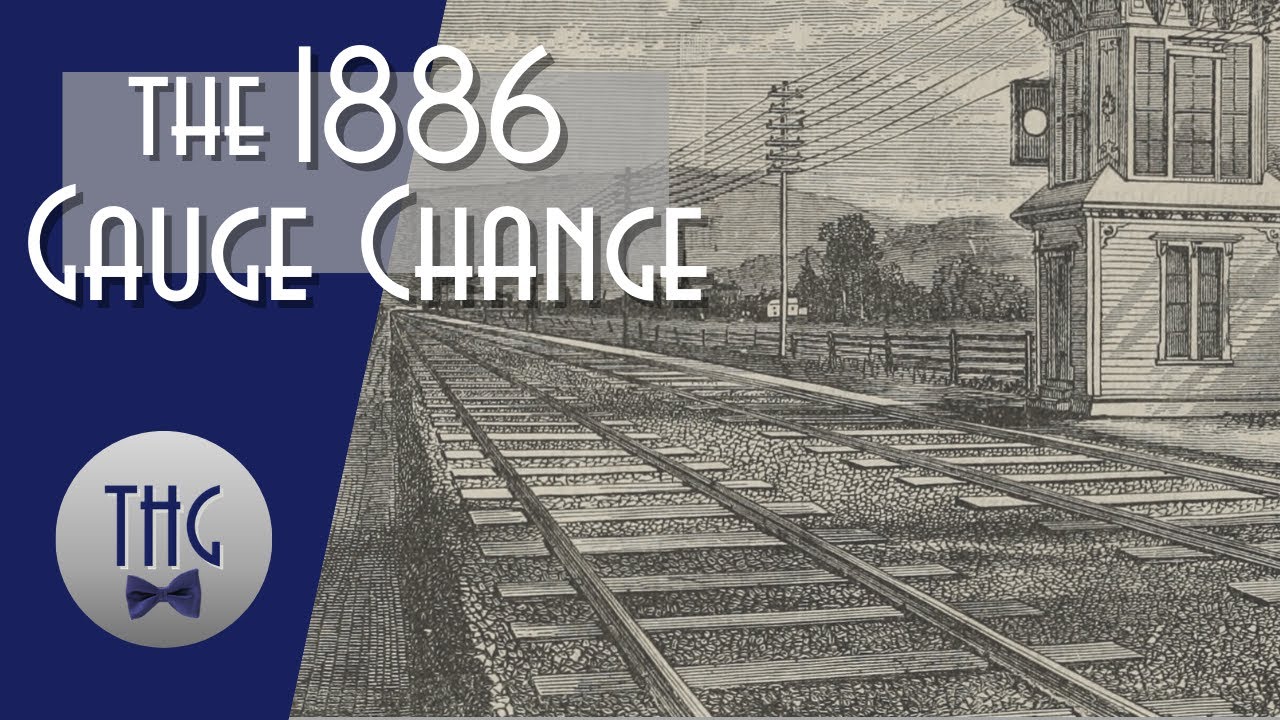Railroads in the northern U.S. mostly used the same “standard gauge” as in Britain: 4 foot 8½ inch (which was about the same as the distance between cart wheels in the Roman Empire), while in the southern states a wider 5 foot gauge was used, better suited to hauling the cotton bales that made up much of their traffic. There was relatively little railroad traffic between the North and South, with most commerce going by sea or river, but in the years after the war of secession, north-south commerce expanded, and the requirement to unload freight or transfer passengers where railroads with different gauges connected became increasingly inconvenient, inefficient, and expensive.
In 1886, a consortium of southern railroads agreed to adopt the standard gauge (well, actually, the half inch wider gauge used by the Pennsylvania Railroad, which was essentially compatible). After four months of preparation, on May 31, 1886 the southern railroads shut down and an intensive effort began to convert the entire 15,000 miles (18,600 km) of track, plus all locomotives and rolling stock to the new gauge. Pre-modified trains were sent down the converted track to test compatibility and repair any problems with on-board work crews. The conversion of the entire southern railroad system was accomplished in just 36 hours, with little disruption to passenger or freight service.
Today, in the land of feet, pounds, and gallons, one expects such a change would take 25 years to plan, 30 years to execute, and cost 20 trillion dollars.
